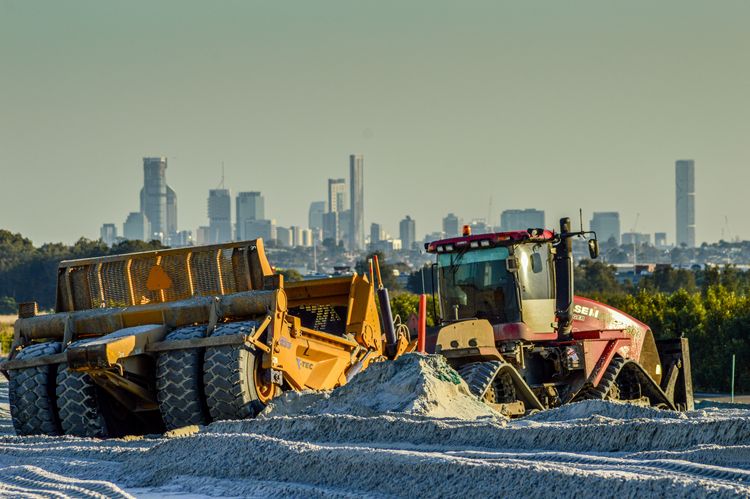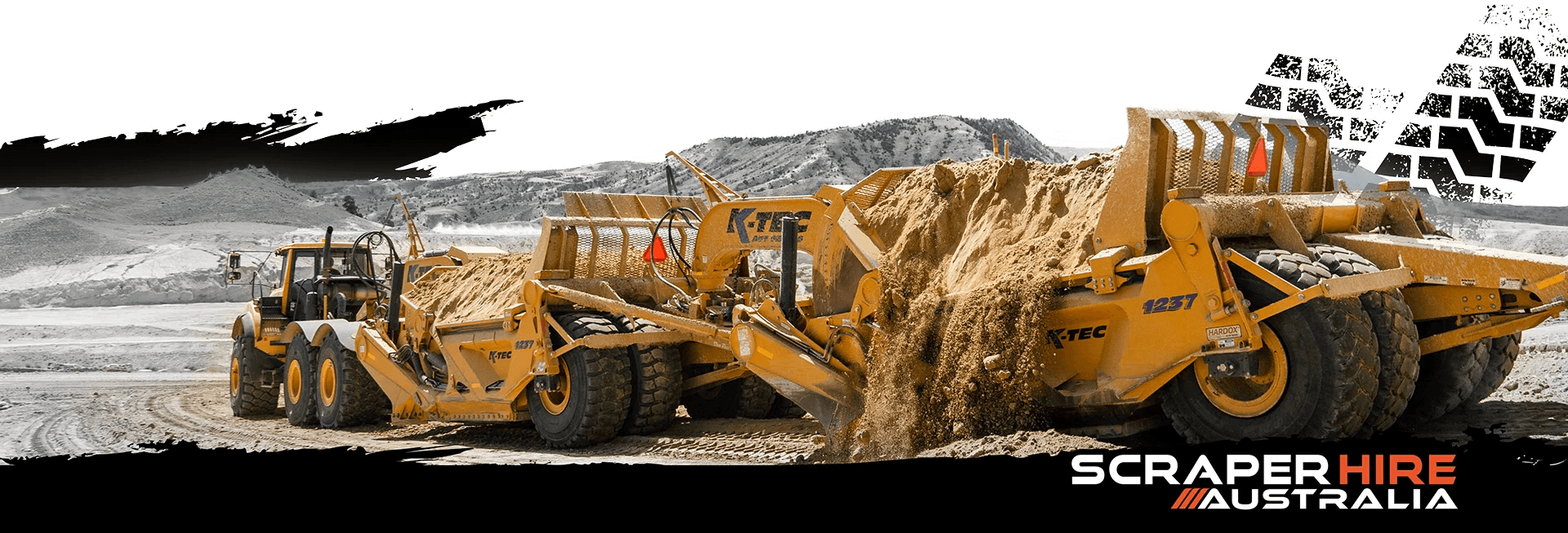In the expansive landscape of construction and mining, the evolution of machinery has been marked by milestones that have transformed the way we shape our world. Among the remarkable innovations that have left an indelible mark on these industries, earthmoving scrapers stand out as true game-changers. These mechanical marvels, often unsung heroes, have revolutionized construction and mining, turning mundane tasks of moving earth into feats of engineering precision. In this exploration, we embark on a journey through time and technology to uncover how earthmoving scrapers have turned dirt into gold, shaping the foundation of modern construction and mining practices.
The Evolution of Earthmoving: A Historical Perspective
Before the advent of mechanized equipment, the task of moving earth was a laborious and time-consuming endeavor. Manual methods, such as shovels, wheelbarrows, and horse-drawn carts, were the primary tools used for excavation and material transportation. These methods were not only physically demanding but also limited in their capacity to handle large-scale projects.
The emergence of mechanized earthmoving equipment in the late 19th and early 20th centuries marked a significant turning point. Steam-powered machines, such as steam shovels and bulldozers, brought newfound efficiency to construction and mining operations. However, it wasn’t until the introduction of earthmoving scrapers that a true revolution began to unfold.
The Workhorse of Earthmoving: Understanding Earthmoving Scrapers
At the heart of the earthmoving revolution lies the earthmoving scraper – a versatile and powerful machine designed for excavating, loading, and transporting large volumes of material. Earthmoving scrapers are engineered to cut through soil, gather material, and then transport it to a designated location, all in one seamless motion. This efficiency drastically reduces the number of cycles required to complete excavation tasks, making scrapers invaluable tools for construction and mining.
There are various types of earthmoving scrapers, each optimized for specific tasks. These include:
Motor Scrapers: These self-propelled scrapers are equipped with a bowl that can be raised and lowered to collect and transport material.
Elevating Scrapers: These scrapers feature an elevator system that raises the material into the bowl, allowing for higher dumping heights.
Open Bowl Scrapers:These scrapers have a simple open bowl design and are commonly used for spreading material or leveling surfaces.
Coal Bowl Scrapers: Designed for mining operations, these scrapers have a specialized bowl for handling coal and other loose materials.
Efficiency Redefined: How Scrapers Transformed Construction
The introduction of earthmoving scrapers marked a turning point in the efficiency and speed of construction projects. Traditional construction methods often involved time-consuming and labor-intensive excavation, which could lead to project delays and increased costs. Earthmoving scrapers revolutionized this process by streamlining excavation and material transportation.
Imagine a construction site where a road is being built. In the past, teams of laborers with shovels and wheelbarrows would painstakingly move earth to create the roadbed. With the advent of earthmoving scrapers, this task became exponentially faster and more efficient. A single scraper operator could move vast amounts of material in a fraction of the time it would take a team of laborers. This newfound efficiency translated into accelerated project timelines and significant cost savings.
Mining Marvels: Scrapers’ Contribution to Resource Extraction
The impact of earthmoving scrapers extends beyond construction into the realm of mining. In open-pit mining, where valuable minerals and resources are extracted from the earth’s crust, scrapers play a pivotal role. These machines are instrumental in removing overburden material – the layer of soil and rock that covers the desired minerals.
Open-pit mining operations involve the removal of enormous amounts of material to access the underlying resources. Earthmoving scrapers, with their impressive capacity and efficiency, facilitate this process by excavating and transporting the overburden material to designated disposal areas. As a result, valuable minerals are exposed and can be extracted with greater ease and efficiency.
Advancements in Scraper Technology: Precision and Automation
The evolution of earthmoving scrapers has been characterized by advancements in technology that have elevated their precision and efficiency. Modern scrapers are equipped with sophisticated features such as GPS-guided systems, automation, and telematics. These technologies have redefined the way scrapers operate, ensuring a higher level of accuracy and control.
GPS-guided scraper systems utilize real-time positioning data to guide scraper operations with exceptional precision. This technology allows operators to follow design plans with minimal deviations, resulting in accurately graded surfaces and reduced material waste. Furthermore, automation has enabled scrapers to perform tasks with consistent precision, minimizing human error and optimizing efficiency.
Environmental Considerations: Scraper Technology for Sustainable Practices
As the world becomes increasingly attuned to environmental concerns, the role of earthmoving scrapers in promoting sustainability has come to the forefront. Traditional construction and mining practices often result in significant soil disturbance and environmental disruption. Earthmoving scrapers, with their precision and control, offer a more sustainable approach by minimizing soil displacement and ecosystem disruption.
Modern scrapers contribute to sustainability in several ways:
Minimized Soil Disturbance: The precision of modern scrapers reduces the need for excessive soil displacement, preserving the natural contours of the land and minimizing erosion.
Erosion Control:By maintaining the integrity of the topsoil layer, modern scrapers help prevent soil erosion and sediment runoff, protecting nearby water bodies.
Habitat Preservation:Controlled excavation practices ensure that habitat disruption is minimized, allowing ecosystems to remain intact and supporting biodiversity.
Operator Expertise: The Human Element in Scraper Operations
While technology has revolutionized scraper operations, the importance of skilled operators cannot be overstated. Skilled operators possess a deep understanding of scraper capabilities, terrain dynamics, and equipment nuances. Their expertise allows them to optimize scraper performance and achieve precise excavation.
Training and qualifications are essential for scraper operators to harness the full potential of these machines. Proper training equips operators with the skills to operate scrapers efficiently, read and interpret design plans, and make real-time adjustments to achieve optimal results. The symbiotic relationship between advanced technology and skilled operators ensures that scraper operations are executed with the highest level of precision and efficiency.
Economic Impacts: Efficiency Gains and Cost Savings
Beyond their environmental and operational benefits, earthmoving scrapers have a profound impact on project economics. The efficiency gains achieved through scraper-assisted operations translate into significant cost savings. The reduced number of cycles required for excavation, combined with minimized material waste, leads to expedited project timelines and reduced labor costs.
To put this in perspective, consider a large-scale excavation project. In the absence of earthmoving scrapers, the time and manpower required for manual excavation would be substantial. With the introduction of scrapers, the same project can be completed in a fraction of the time, resulting in substantial financial savings. These economic benefits make earthmoving scrapers not only efficient tools but also valuable assets for businesses seeking to optimize their bottom line.
Beyond the Horizon: Future Prospects and Innovations
As technology continues to evolve, the horizon for earthmoving scrapers holds exciting prospects. The integration of artificial intelligence (AI), automation, and advanced data analytics is set to usher in a new era of scraper operations. AI-powered scraper systems can analyze vast amounts of data in real time, optimizing scraper movement, fuel consumption, and emissions. Automation ensures consistent and precise scraper movements, further enhancing operational efficiency.
Moreover, the potential applications of scrapers extend beyond construction and mining. These machines are poised to play a pivotal role in addressing urbanization challenges and supporting the development of smart cities. With their ability to efficiently shape terrain, scrapers can assist in creating the foundational infrastructure needed for sustainable urban growth.
Conclusion
The journey from dirt to gold in construction and mining has been facilitated by the evolution of earthmoving scrapers. These machines, born from a desire for efficiency and sustainability, have transformed the way we approach excavation, material transportation, and resource extraction. From accelerating project timelines and reducing costs to promoting environmental stewardship, earthmoving scrapers have proven to be invaluable assets in the modern construction and mining industries.
At Scraper Hire Australia, we recognize the transformative impact of earthmoving scrapers on construction and mining. Our cutting-edge scraper fleet are equipped to meet your project’s demands with precision and efficiency. Join us in embracing the legacy of innovation that earthmoving scrapers have left on these industries and experience the benefits of state-of-the-art equipment and expertise.




